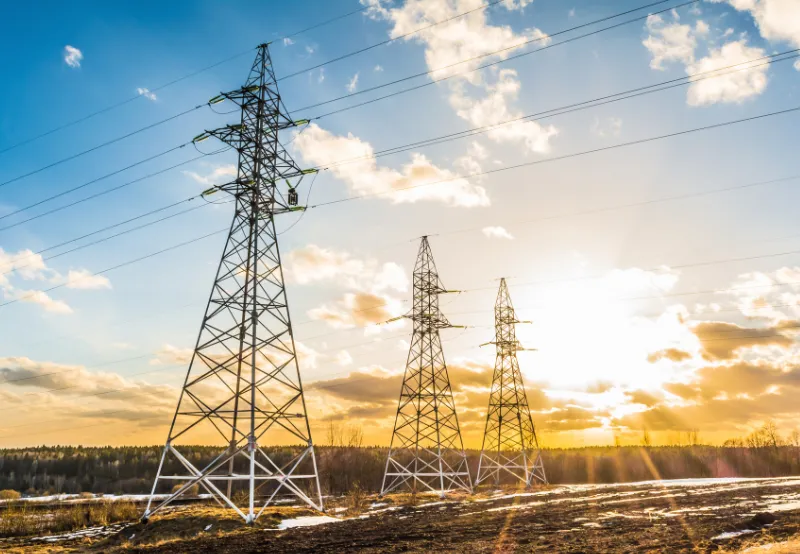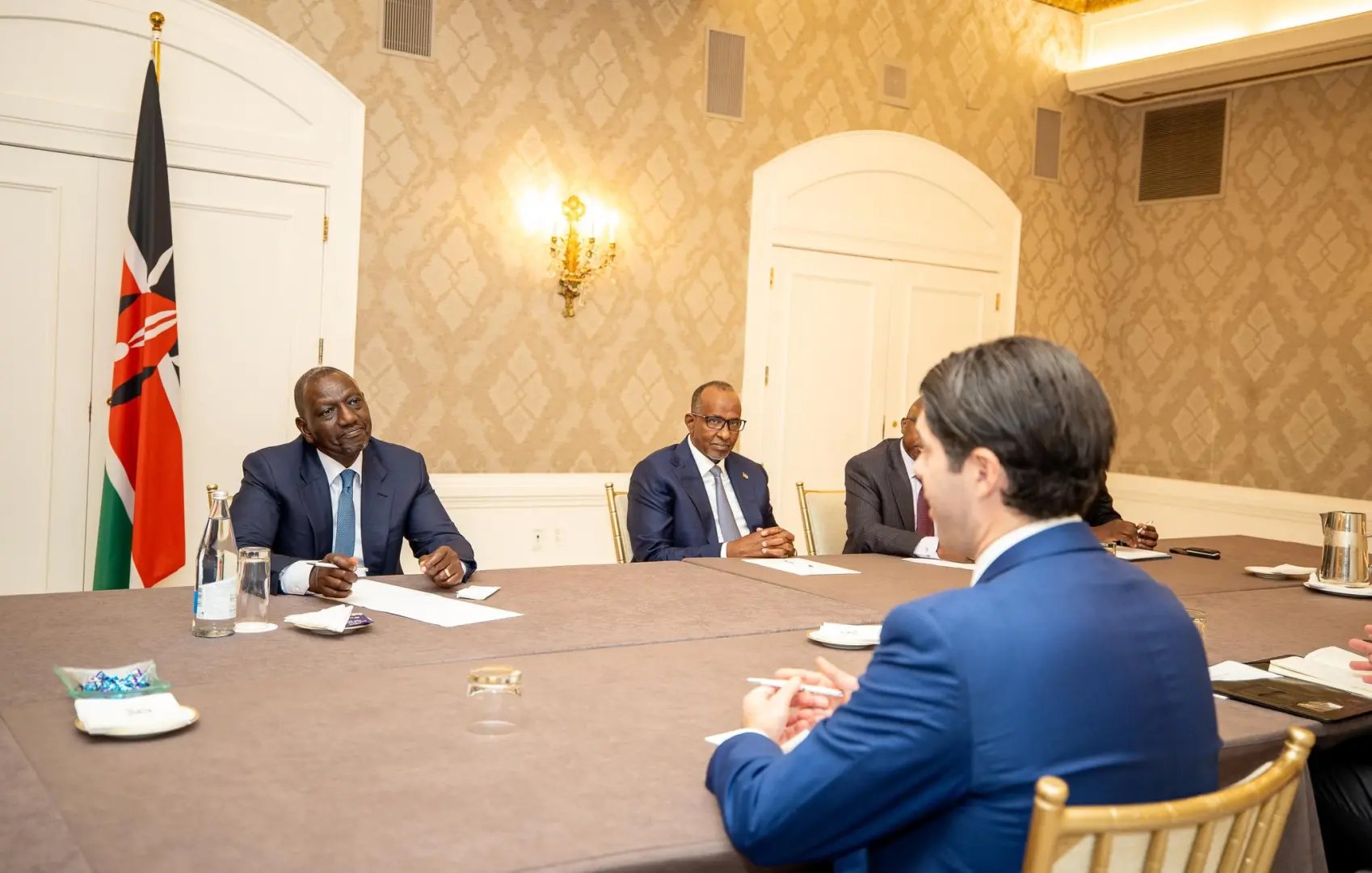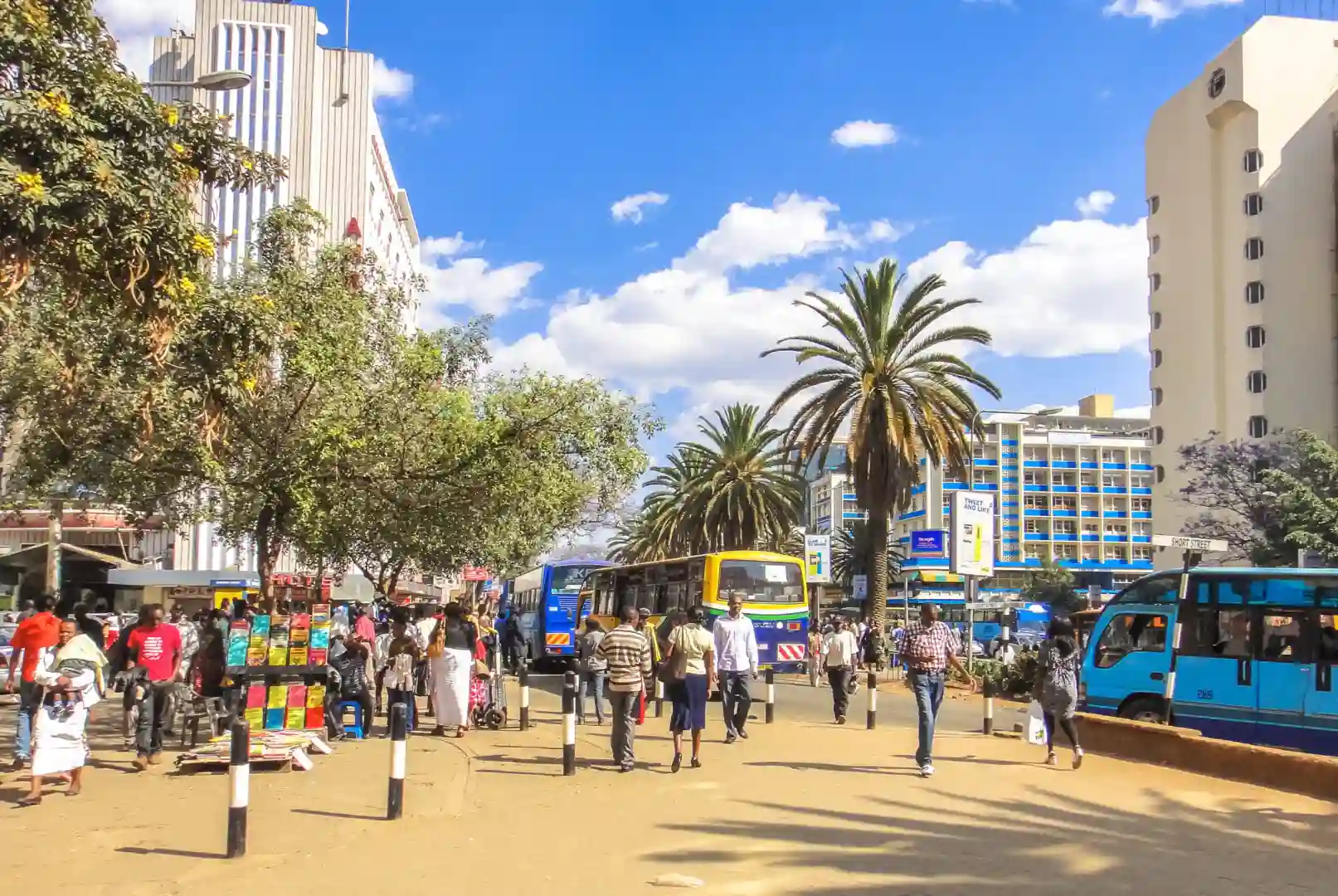A historic moment in East African energy cooperation unfolded this week as Ethiopia commenced its first-ever electricity exports to Tanzania, with power seamlessly transmitted through Kenya’s robust high-voltage network. This successful pilot marks a significant milestone in regional energy trade, establishing a new corridor for power flow and solidifying Ethiopia’s burgeoning role as a regional energy supplier.
The trial transmission, announced by the Kenya Electricity Transmission Company (KETRACO) Managing Director on social media, saw electricity from Ethiopia flowing along Kenya’s critical 400kV Suswa–Isinya line before connecting to the Kenya–Tanzania interconnector. The operation successfully increased the load on the line from 225 megawatts (MW) to 262 MW, demonstrating the corridor’s operational reliability and the smooth cross-border connectivity achieved through years of strategic infrastructure development. This event is not merely a technical success; it represents a powerful step towards enhanced energy security, economic integration, and sustainable development across East Africa.
The Historic Pilot Transmission: A Technical Triumph
The successful transmission of Ethiopian electricity to Tanzania via Kenya’s grid is a testament to meticulous planning, significant investment, and the collaborative spirit of the Eastern Africa Power Pool (EAPP) member states. The journey of this power begins in Ethiopia, a nation rich in hydropower resources, and traverses hundreds of kilometers through sophisticated transmission infrastructure.
The core of this achievement lies in the operational efficiency of Kenya’s transmission backbone. The 400kV Suswa–Isinya line, a critical component of Kenya’s national grid, served as the conduit for the Ethiopian power. This high-voltage line is designed for bulk power transfer, ensuring minimal losses over long distances. From the Suswa substation, the power then seamlessly integrated with the newly energized Kenya–Tanzania interconnector. This 400kV line, completed and energized in late 2024, links Singida in central Tanzania through Babati and Arusha to the border town of Namanga, connecting to Kenya’s grid.
The increase in load from 225 MW to 262 MW during the pilot demonstrates the technical capacity of the transmission corridor to handle significant power flows. This incremental increase is crucial for testing the stability and reliability of the interconnected grids under varying load conditions. For grid operators, it confirms that the interconnector can efficiently transmit power without compromising the stability of either the Kenyan or Tanzanian national grids. This technical validation is a prerequisite for long-term, high-volume power trade agreements.
This marks the first time that Ethiopian electricity has physically reached Tanzanian consumers through this multi-country pathway. While Ethiopia has existing bilateral power purchase agreements with neighboring countries, this new corridor expands its reach significantly, creating a truly regional energy market.
Ethiopia’s Ascent as a Regional Powerhouse
Ethiopia possesses immense renewable energy potential, particularly in hydropower, making it a natural candidate to become a regional energy hub. The nation’s total electric power generation capacity is projected to reach over 60,000 MW from hydroelectric, wind, solar, and geothermal sources. As of early 2024, Ethiopia’s installed generation capacity was around 5,200 MW, with approximately 90% derived from hydropower. The government has an ambitious 10-year Development Plan to increase power generation capacity to 19,900 MW by 2030, a four-fold increase from current levels.
Central to Ethiopia’s energy ambitions is the Grand Ethiopian Renaissance Dam (GERD) on the Blue Nile River. When fully completed, GERD is poised to become Africa’s largest hydroelectric power station, with an installed capacity of 5.15 gigawatts (GW) from its 13 turbines. It is expected to generate approximately 15.76 terawatt-hours (TWh) of electricity annually. While the dam has been a subject of regional geopolitical discussions, its immense power generation potential is undeniable and critical to Ethiopia’s vision for energy self-sufficiency and export. As of October 2024, the fifth and final filling of the GERD reservoir was completed, bringing it to its full operating level. Several turbines have already been commissioned, contributing significantly to the national grid.
Ethiopia’s strategy is not just about meeting its rapidly growing domestic demand (which increases by 30-35% annually, largely driven by industrialization); it’s also about leveraging its surplus power for export. The country aims to more than double its electricity exports (from 2,803 GWh to 7,184 GWh) by 2030, targeting countries like Djibouti, Sudan, Kenya, and now Tanzania. Ethiopia already supplies around 200 MW to Kenya under a long-term agreement, and has plans to increase power exports to Djibouti up to 300 MW and has signed an MoU to export 100 MW to South Sudan. This diversification of export markets enhances Ethiopia’s foreign exchange earnings and strengthens its economic ties across the region.
The Eastern Africa Power Pool (EAPP): A Framework for Integration
The successful power transfer is a direct outcome of the framework provided by the Eastern Africa Power Pool (EAPP). Established in 2005, the EAPP is a 13-member initiative designed to foster regional integration in the electricity sector. Its primary objectives include:
- Optimizing Energy Resources: Facilitating the least-cost development of interconnected electrical power systems by leveraging diverse energy sources (hydro, geothermal, solar, wind) across member countries.
- Promoting Power Exchanges: Enabling cross-border power trade among utilities to address power deficits, utilize surplus capacity, and enhance overall grid reliability.
- Enhancing Power Supply Security: Providing mutual assistance in case of system failures or shortages in member countries.
- Reducing Electricity Production Costs: Achieving economies of scale through interconnected systems and increased power exchange.
- Increasing Access to Electricity: Expanding power supply to increase the electrification rate across Eastern Africa.
- Creating a Regional Electricity Market: Facilitating the long-term development of a competitive electricity market in the region.
The EAPP’s current member countries include Burundi, Djibouti, the Democratic Republic of Congo (DRC), Egypt, Ethiopia, Kenya, Rwanda, Sudan, Tanzania, Uganda, and Libya, with South Sudan and Somalia having joined recently. The EAPP Secretariat, based in Addis Ababa, Ethiopia, plays a crucial role in coordinating the development and operation of the power pool.
The EAPP’s vision is to “optimize the usage of clean energy resources available in the region to benefit the region’s society with reduced cost of electricity production and increased rate of access to electrify Eastern Africa.” The Ethiopia-Kenya-Tanzania power corridor is a tangible manifestation of this vision, demonstrating how regional cooperation can translate into practical benefits for millions.
The Crucial Transmission Infrastructure: A Network of Progress
The realization of this cross-border power trade hinges on significant investments in high-voltage transmission infrastructure. The financing for these critical interconnections has been a collaborative effort involving Kenya’s National Treasury and a consortium of prominent development partners:
- The World Bank: Through initiatives like the Eastern Electricity Highway Project under the First Phase of the Eastern Africa Power Integration Program, the World Bank has been a major financier of transmission lines aimed at connecting regional grids. Their support focuses on enhancing the capacity and reliability of these vital links.
- African Development Bank (AfDB): The AfDB has consistently championed regional power interconnections as part of its “Light up and Power Africa” High 5s strategy. The Bank’s investments aim to build robust intra- and inter-regional power systems that will underpin the development of an interconnected continental power grid, linking existing power pools and facilitating the establishment of an African Single Electricity Market. Their funding for the Kenya-Tanzania interconnector is a direct example of this commitment.
- French Development Agency (AFD): AFD is a key player in financing sustainable development projects globally, with a strong focus on energy transition in Africa. Their involvement in regional transmission projects underscores their commitment to supporting clean energy access and climate resilience across the continent.
- European Investment Bank (EIB): The EIB, the EU’s long-term lending institution, has a significant portfolio of energy projects in Africa, emphasizing sustainable infrastructure. Their financing aligns with the EU’s “Global Gateway” strategy, which aims to mobilize substantial investments for clean energy and digital transformation across Africa. The EIB’s support for the Kenya-Tanzania interconnector is part of its broader efforts to enhance regional connectivity and promote a low-carbon development pathway.
These multilateral financial institutions provide not only capital but also technical expertise, project management support, and help in establishing robust regulatory and operational frameworks, ensuring the long-term viability and sustainability of these complex cross-border projects. The interconnected grid is part of broader plans to link Eastern and Southern Africa’s electricity grids, creating a truly continental power market.
Multifaceted Benefits of Regional Energy Trade
The successful initiation of electricity trade between Ethiopia and Tanzania via Kenya brings a multitude of benefits to all involved parties and the wider region:
For Ethiopia: Economic Diversification and Revenue Generation
As a nation with abundant hydropower resources, Ethiopia stands to gain significant revenue from exporting its surplus electricity. This provides a crucial source of foreign exchange earnings, diversifying the economy beyond traditional agricultural exports. It also allows Ethiopia to fully utilize its large-scale power generation assets, which might otherwise face underutilization if solely reliant on domestic demand. This strategic export capability enhances Ethiopia’s geopolitical influence in the region.
For Kenya: A Strategic Energy Transit Hub
Kenya solidifies its position as a critical energy transit hub in East Africa. By hosting the high-voltage transmission lines that facilitate cross-border power flow, Kenya enhances its strategic importance in regional energy security. While already importing power from Ethiopia, acting as a transit country for power destined for Tanzania strengthens its grid stability and offers potential for future revenue streams from transmission fees. It also showcases Kenya’s advanced transmission infrastructure and its commitment to regional integration.
For Tanzania: Access to Affordable, Clean Energy
Tanzania, which has faced its own energy demand challenges, gains access to a new, reliable, and potentially more affordable source of clean hydropower. This reduces its reliance on thermal power plants (often fueled by expensive and polluting fossil fuels), contributing to a cleaner energy mix and lower electricity costs for consumers and industries. Increased access to stable power supports Tanzania’s industrialization efforts, boosts productivity, and improves the overall quality of life for its citizens. It also provides a crucial buffer against domestic power generation shortfalls, enhancing energy security.
For the Eastern Africa Region: Collective Prosperity
The broader regional benefits are profound:
- Enhanced Energy Security: By diversifying sources and enabling mutual assistance, the interconnected grid reduces the vulnerability of individual countries to power shortages or generation failures.
- Reduced Power Deficits: Countries facing energy deficits can import power from those with surpluses, ensuring more consistent supply.
- Lower Electricity Costs: Leveraging the least-cost power generation sources across the region can lead to lower overall electricity tariffs for consumers and businesses, making industries more competitive.
- Environmental Sustainability: Prioritizing clean hydropower and other renewables in cross-border trade contributes significantly to reducing the region’s carbon footprint and combating climate change.
- Fostering Regional Economic Integration: Interconnected energy grids are powerful drivers of economic integration, facilitating trade, investment, and the free movement of goods and services across borders. It creates a more attractive environment for regional and international investors.
Challenges and the Path Ahead
While the pilot is a resounding success, the path to a fully integrated and efficient regional power market is not without its challenges:
- Technical Harmonization: Ensuring seamless operation requires continuous technical coordination, grid code harmonization, and robust maintenance protocols across national utilities. Managing voltage stability, frequency control, and power flow across multiple interconnected grids is complex.
- Financial Sustainability: Establishing fair and transparent tariff structures for power trade, ensuring cost recovery for transmission infrastructure, and attracting further investment for grid expansion remain critical.
- Political and Regulatory Frameworks: Cross-border power purchase agreements require strong legal and regulatory frameworks, dispute resolution mechanisms, and consistent political will. Harmonizing energy policies and regulations across diverse national contexts can be challenging.
- Environmental and Social Considerations: Large-scale hydropower projects, while providing clean energy, can have significant environmental and social impacts (e.g., displacement, ecosystem changes) that require careful management and mitigation.
- Climate Variability: Reliance on hydropower can be vulnerable to climate change-induced droughts, necessitating a diversified energy mix that includes solar, wind, and geothermal.
Despite these hurdles, the long-term vision remains clear: a fully integrated African power market. The success of the Ethiopia-Kenya-Tanzania power corridor provides a powerful blueprint for future interconnections, potentially linking the EAPP with the Southern African Power Pool (SAPP) and other regional pools. Such a continental grid would unlock Africa’s vast energy potential, drive industrialization, and significantly improve the quality of life for hundreds of millions.
Conclusion: A New Dawn for East African Energy
The commencement of electricity supply from Ethiopia to Tanzania via Kenya’s grid marks a truly transformative moment for East Africa. It is a testament to Ethiopia’s strategic vision for leveraging its abundant hydropower, Kenya’s critical role as a transit nation with advanced infrastructure, and Tanzania’s commitment to securing clean and affordable energy.
This pilot, facilitated by the Eastern Africa Power Pool and supported by major multilateral development banks, is more than just a technical achievement. It symbolizes a new era of regional cooperation, where shared resources and interconnected infrastructure pave the way for enhanced energy security, economic growth, and sustainable development across the continent. As the power flows across borders, it carries with it the promise of a brighter, more electrified future for East Africa.
Ready to take your career to the next level? Join our dynamic courses: ACCA, HESI A2, ATI TEAS 7 , HESI EXIT , NCLEX – RN and NCLEX – PN, Financial Literacy!🌟 Dive into a world of opportunities and empower yourself for success. Explore more at Serrari Ed and start your exciting journey today! ✨
photo source: Google
By: Montel Kamau
Serrari Financial Analyst
1st July, 2025
Article, Financial and News Disclaimer
The Value of a Financial Advisor
While this article offers valuable insights, it is essential to recognize that personal finance can be highly complex and unique to each individual. A financial advisor provides professional expertise and personalized guidance to help you make well-informed decisions tailored to your specific circumstances and goals.
Beyond offering knowledge, a financial advisor serves as a trusted partner to help you stay disciplined, avoid common pitfalls, and remain focused on your long-term objectives. Their perspective and experience can complement your own efforts, enhancing your financial well-being and ensuring a more confident approach to managing your finances.
Disclaimer: This article is for informational purposes only and does not constitute financial advice. Readers are encouraged to consult a licensed financial advisor to obtain guidance specific to their financial situation.
Article and News Disclaimer
The information provided on www.serrarigroup.com is for general informational purposes only. While we strive to keep the information up to date and accurate, we make no representations or warranties of any kind, express or implied, about the completeness, accuracy, reliability, suitability, or availability with respect to the website or the information, products, services, or related graphics contained on the website for any purpose. Any reliance you place on such information is therefore strictly at your own risk.
www.serrarigroup.com is not responsible for any errors or omissions, or for the results obtained from the use of this information. All information on the website is provided on an as-is basis, with no guarantee of completeness, accuracy, timeliness, or of the results obtained from the use of this information, and without warranty of any kind, express or implied, including but not limited to warranties of performance, merchantability, and fitness for a particular purpose.
In no event will www.serrarigroup.com be liable to you or anyone else for any decision made or action taken in reliance on the information provided on the website or for any consequential, special, or similar damages, even if advised of the possibility of such damages.
The articles, news, and information presented on www.serrarigroup.com reflect the opinions of the respective authors and contributors and do not necessarily represent the views of the website or its management. Any views or opinions expressed are solely those of the individual authors and do not represent the website's views or opinions as a whole.
The content on www.serrarigroup.com may include links to external websites, which are provided for convenience and informational purposes only. We have no control over the nature, content, and availability of those sites. The inclusion of any links does not necessarily imply a recommendation or endorsement of the views expressed within them.
Every effort is made to keep the website up and running smoothly. However, www.serrarigroup.com takes no responsibility for, and will not be liable for, the website being temporarily unavailable due to technical issues beyond our control.
Please note that laws, regulations, and information can change rapidly, and we advise you to conduct further research and seek professional advice when necessary.
By using www.serrarigroup.com, you agree to this disclaimer and its terms. If you do not agree with this disclaimer, please do not use the website.
www.serrarigroup.com, reserves the right to update, modify, or remove any part of this disclaimer without prior notice. It is your responsibility to review this disclaimer periodically for changes.
Serrari Group 2025












